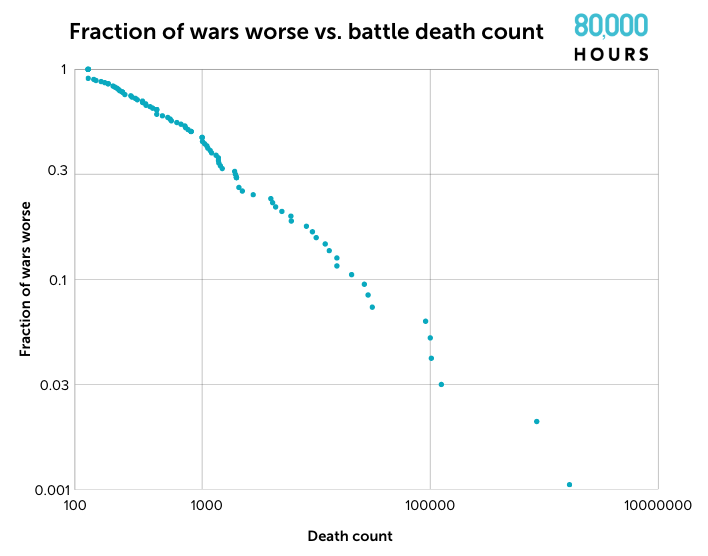What the war in Ukraine shows us about catastrophic risks
A new great power war could be catastrophic for humanity — but there are meaningful ways to reduce the risk.
We’re now in the 17th month of the war in Ukraine. But at the start, it was hard to foresee it would last this long. Many expected Russian troops to take Ukraine’s capital, Kyiv, in weeks. Already, more than 100,000 people, including civilians, have been killed and over 300,000 more injured. Many more will die before the war ends.
The sad and surprising escalation of the war shows why international conflict remains a major global risk. I explain why working to lower the danger is a potentially high-impact career choice in a new problem profile on great power war.
As Russia’s disastrous invasion demonstrates, it’s hard to predict how much a conflict will escalate. Most wars remain relatively small, but a few will become terrifyingly large. US officials estimate about 70,000 Russian and Ukrainian soldiers have died in battle so far. That means this war is already worse than 80% of all the wars humanity has experienced in the last 200 years.
But the worst wars humanity has fought are hundreds of times larger than the war in Ukraine currently is. World War II killed 66 million people, for example — perhaps the single deadliest event in human history.

Barring the use of nuclear weapons, it doesn’t seem likely the war in Ukraine will escalate that much.
But I still think a war worse than World War II — though unlikely — could erupt in our lifetimes. Reducing that risk could be one of the most pressing problems of our time.
The prospect of a modern great power conflict is particularly worrying because humanity’s capacity to make war increases over time. Since 1945 nuclear weapons have proliferated. And billions of dollars spent on military R&D have led to the invention of:
- Advanced jets, ships, missiles, and guns
- Technical augmentations like remote sensors and satellites
- Emerging technologies like autonomous weapons and drones
- New nuclear weapon technologies
- Techniques that could be used to develop advanced bioweapons
At the time, the mechanised slaughter of World War I was a shocking step-change in the severity of warfare. But it was surpassed just 20 years later by the outbreak of World War II, which killed more than twice as many people.
A modern great power war could be even worse. It would reshape our world with very long-term effects and could even threaten us with extinction or the end of civilization as we know it.
At the end of the new profile I suggest a few specific paths forward if you want to use your career to reduce the risk. These include:
- Working in various roles in the US government
- Starting a high-impact research project
- Developing expertise in important fields, such as US-China relations
I see several worrying trends among relations between the world’s most powerful countries. Beyond the invasion of Ukraine, relations between the US and China are poor, and India and China have recently fought deadly battles along their border.
Right now it’s hard to imagine these countries cooperating meaningfully on major issues like preventing pandemics and governing advanced artificial intelligence systems. They could even blunder into an all-out war.
But as political scientist Chris Blattman reminds us, most potential wars are not fought. We can yet avoid World War III this century. And reducing great power tensions might also help us work together as a species to mitigate the major threats we face.
Learn more:
- Our podcast episode with Daniel Ellsberg on the creation of nuclear doomsday machines
- Our problem profile on nuclear war
- Our podcast episode with Bear Braumoeller on the case that war isn’t in decline
- Our podcast episode with Joan Rohlfing on how to avoid catastrophic nuclear blunders